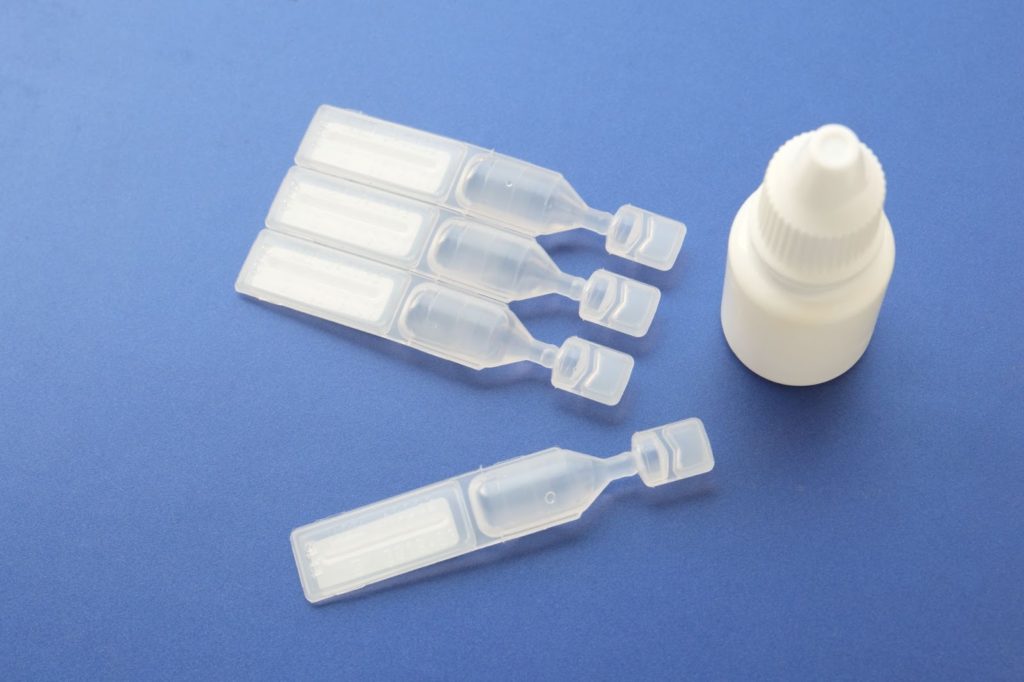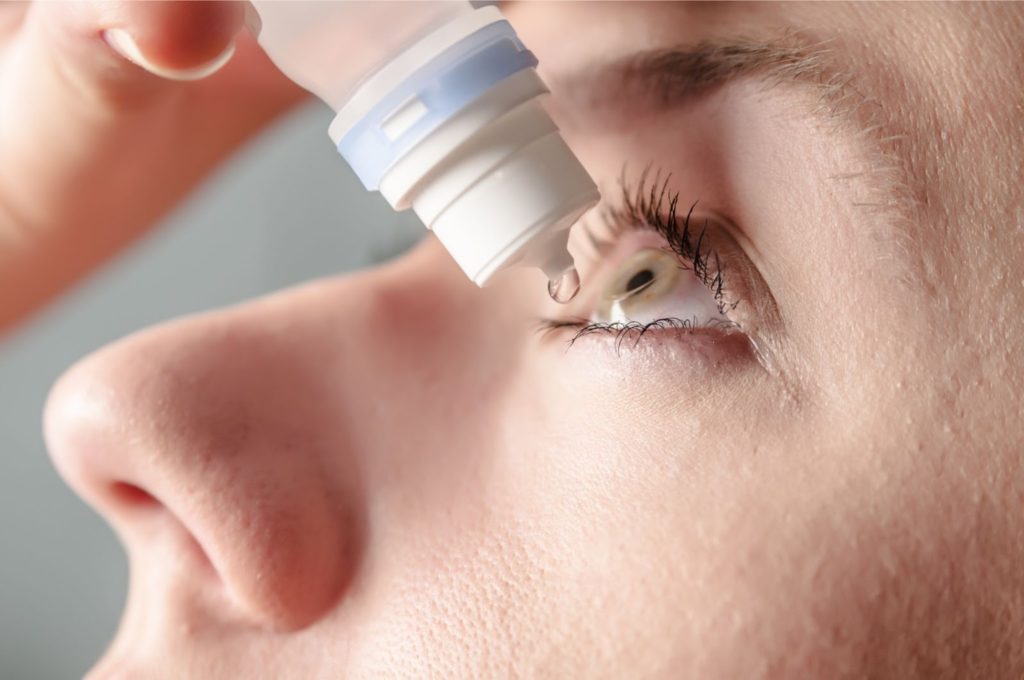If you wake up with dry, red, or painful eyes, you may be suffering from dry eye disease.
Unfortunately, dry eye disease is common, and studies show that roughly 1 in 4 Canadians experience dry eye symptoms at some point in their life.
The good news is, there are many treatment options available, from medicated eye drops to professional dry eye therapy. These treatments can help reduce your risk of dry eye complications. But with thousands of eye drops on the pharmacy shelves, how do you know which ones to choose?
To help you pick the right eye drops, we’ve compiled a list of our top 10 tips for choosing eye drops for dry eye.
What is Dry Eye?
Dry eye disease is a common eye condition that occurs when there is a long-term lack of lubrication and moisture in the eyes. Dry eye disease can affect everyone differently. Dry eye can:
- Show a range of different symptoms
- Be chronic or temporary
- Affect one or both eyes
Understanding Dry Eye
Dry eye occurs when there is an issue with your tears. Our tears are an essential part of our visual health. Tears consist of:
- The oily layer made by meibomian glands
- A watery (aqueous) layer made by lacrimal glands
- A mucous layer made in the conjunctiva of the eye
If any one of these components is lacking, it can lead to dry eye.
The Types of Dry Eye
There are two types of dry eye that could be affecting your eyes:
- Aqueous deficient dry eye occurs when there is an inadequate aqueous layer in the tear film. When this happens, your eye can’t produce enough tears to keep your eyes moist and functioning correctly.
- Evaporative dry eye is the most common form of dry eye and occurs when there is a lack of the lipid or mucous layer present in your tears. Without these layers, your tears evaporate too quickly, causing your eyes to dry out.
Causes of Dry Eye
Inadequate tear production and poor tear quality are the top two causes of dry eye. For your tears to function the way they’re supposed to, your body needs to produce the right amount, and they need to be healthy.
Several factors can compromise the production and health of your tears, which may cause you to experience dry eye symptoms. These factors include:
- Age
- Certain medical conditions, such as diabetes and arthritis
- Damage to your eyes
- Side effects from eye surgeries
- Poor diet
- A change in environment
Signs & Symptoms of Dry Eye
If you are suffering from dry eyes disease, you may experience any of the following signs or symptoms:
- A stinging, burning, scratchy or gritty sensation in your eyes
- Watery eyes
- Blurred vision
- Eye fatigue
- Excess mucus in or around your eyes
- Eye redness
- Sensitivity to light
- An uncomfortable feeling while wearing contact lenses
- Difficulty with nighttime vision
How to Get Diagnosed with Dry Eye
The only way to get properly diagnosed with dry eye disease is to receive an eye exam from your eye doctor. Therefore, if you are experiencing any of the previously mentioned signs or symptoms, you should see your eye doctor as soon as possible.

10 Tips for Choosing Eye Drops
- Pay Attention to Your Symptoms
If you think eye drops are the correct treatment for you, the first step is to know what symptoms you are suffering from. Write a list of all the symptoms you are experiencing so you can look for eye drops that combat these issues.
- Identify the Cause of Your Dry Eye
To find the right eye drops, you need to get the right diagnosis. Book an appointment with your eye doctor to identify the cause of your dry eye.
- Familiarize Yourself with All the Options
There are three main types of eye drops:
- Tear Changing: These eye drops change the chemical make-up of your tears and may be helpful if your dry eye disease is caused by poor tear quality.
- Eye Coating: Eye coating eye drops increase the moisture content in your eye. If evaporative dry eye is your problem, eye coating eye drops may be the right choice for you.
- Oil Stabilizing: You should use oil-stabilizing artificial tears if you suffer from evaporative dry eye due to improper oil production.
- Know the Difference Between Preservative & Non-Preservative Eye Drops
Preservatives are added to eye drops to help them last longer after you open them.
Eye drops with preservatives won’t bother most people, but if you have sensitive eyes or need to apply them often, preservative-free eye drops may be more comfortable.
- Think about Your Other Vision Needs
If you suffer from any other eye conditions or wear contact lenses, you need to take it into consideration when choosing eye drops. Some eye drops can help with symptoms from other eye conditions such as eye redness or swelling. In addition, there are certain eye drops that are specifically made to be contact-lens safe.
- Don’t Commit to One Brand
No one knows your eyes as you do. Therefore, the best way to find the right eye drops for you is by trying multiple different brands to see which one works the best.
- Be Aware of The Side Effects
You should be aware that eye drops sometimes have side effects. Potential side effects of eye drops include:
- Cloudy vision
- Allergic reactions
- Stinging
- Eye redness
If you are experiencing any severe side effects, stop using the product immediately.
- Try a Variety of Products
Eye drops work differently for everyone. For example, eye drops with preservatives may work for someone you know but don’t give you the relief you need. By trying a range of different eye drops, you can find what works best for you.
- Know When to Move On
An important part of choosing eye drops is knowing when a product isn’t working. Signs that you need to try a different product include:
- Your symptoms aren’t getting any better after repeated use
- Your symptoms are getting worse
- The side effects outweigh the benefits
- Talk With Your Eye Doctor
Your eye doctor can recommend eye drops based on your eye examination.
Additionally, if over-the-counter eye drops are not relieving your symptoms, you may want to talk with your eye doctor to see if your dry eye requires prescribed eye drops.
If you have any questions about dry eye, symptoms, or treatment options, contact us today!


